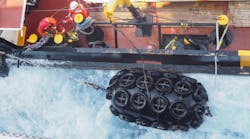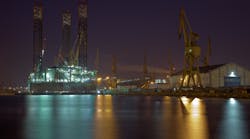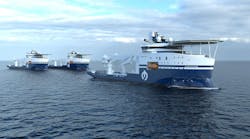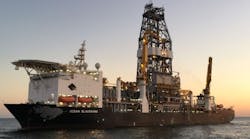Editor's note: This Vessels/Rigs column first appeared in the January-February issue of Offshore magazine. Click here to view the full issue.
By Bruce Beaubouef, Houston
Offshore drilling contractors have had a great start to 2023, as they have reportedly kicked off the new year with 26 rig contracts (17 jackups, 9 floaters) for 38 rig-years of work (30 jackups, 8 floaters). According to Evercore ISI’s latest Offshore Rig Market Snapshot, this has included an “impressive” 16 contracts (>60%) with terms of one year or more (13 jackups, 3 floaters).
“We believe lengthening contract terms will be a sign of a strengthening floater market in 2023 as operators exhaust the availability of priced options fixed at below spot rates,” the firm commented in the report.
On the jackup front, contract terms are on track to trend higher for the fifth straight year from the 2018 trough, the firm said, with potentially India and Mexico playing catchup to Middle East operators in driving term demand.
The Middle East accounted for one-third of all jackup contracts announced in 2022, with 80% of these for term; and these contracts accounted for nearly 60% of all contracts that were issued last year for one year or more.
Evercore estimates that 23 tenders for floaters will commence by the end of 2023, of which at least 10 and up to 13 will be for terms of a year or more. Nearly all of these term tenders will be for development projects, including four tenders from Petrobras for up to four-to-six rigs. Petronas is also looking for floaters for Brazil and Suriname while ONGC has tenders for two floaters off India’s East Coast.
On the jackup side, at least 22 and up to 26 of 42 tenders are expected to be for term, comprised of up to 15 for the Middle East, 3 each for NW Europe and West Africa, and two for Mexico.
Meanwhile, a recent report from Westwood Global Energy Group found that “high-impact” wells are delivering better results. The firm estimates that 81 high-impact exploration wells were completed globally last year, a figure that was similar to the numbers drilled the previous year. However, the returns were better, with the total discovered resource rising from 7.4 Bboe in 2021 to an estimated 9.2 Bboe in 2022.
In addition, the commercial success rate—the proportion of wells that could lead to a potentially commercial development—rose from 29% in 2021 to 36%.
There were play-opening deepwater discoveries in the Orange Basin offshore Namibia: Venus, operated by TotalEnergies, and Graff and La Rona by Shell, containing potentially more than 3.5 Bboe of discovered oil and gas resources.
After Venus, the second largest discovery in 2022, according to Westwood, was Uchuva in the Guijira Basin offshore Colombia, which proved 3 Tcf to 5 Tcf of recoverable gas.
There were also nine potentially commercial discoveries offshore Guyana and one offshore Suriname, which accounted for ~21% of the total discovered resource.
At the same time, only 19 frontier wells were completed in 2022, although these did deliver a 26% commercial success rate with other potential play openers at Timpan in Indonesia and Anchois-2 offshore Morocco.
In emerging plays, the commercial success rate increased from 28% in 2021 to 46% in 2022, due largely to improved results from drilling offshore Suriname-Guyana as the Exxon Mobil-led Stabroek joint venture focused on the core of the proven play fairway.
There was further follow-on success in the Cretaceous carbonate play in the Eastern Mediterranean with gas discoveries in Cronos and Zeus offshore Cyprus and Israel.
At the same time, the commercial success rate from high-impact drilling in maturing/mature plays decreased from 36% in 2021 to 30% in 2022. Attempts to extend the presalt play in the Santos and Campos basins offshore Brazil were unsuccessful, with further disappointments in the southern Caspian Sea, and no successes from the four high-impact wells drilled off NW Europe.
Westwood calculated that 76 companies participated in last year’s 81 high-impact wells, with the most active high explorers being CNOOC, Exxon and Hess (the Stabroek joint venture partners).
Next came TotalEnergies and Shell, followed by Qatar Energy in sixth place.
Westwood anticipates 75-85 high-impact wells this year, with South America’s Suriname-Guyana Basin and offshore Brazil a continued focus for drillers, and the first deepwater well will be drilled offshore Argentina.
Following a quiet period in North America, more than five high-impact wells should be drilled in the US GoM, along with commitment wells offshore Mexico, and a key frontier basin test in the Orphan Basin offshore eastern Canada.
Westwood says that there should be further wells this year offshore Namibia and frontier drilling off Morocco, Gabon and Mozambique, and probably five high-impact wells in the Eastern Mediterranean.









